|
|
 |
|
|
|
|
|
Students at CSC2009
The following people have attended the 2009 CERN School of
Computing.
|
Benjamin RADBURN SMITH |
STFC Rutherford Appleton Laboratory, Didcot – U.K. |
|
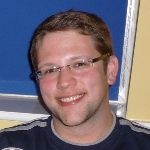
|
I am a first year PhD student with the University of Manchester studying
data mining and visualisation of particle physics datasets. I am currently
based at the Rutherford Appleton Laboratory (RAL) in the UK working between
the CMS group and e-Science Scientific Applications Group. The visualisation
techniques I am investigating include parallel coordinates and the grand
tour. The aim of the project is to create a program which is compatible with
ROOT that will implement these techniques. The program is being written in
C++ for Linux based systems but will be developed to run on other systems as
well.
|
|
|
|
|
Hassen RIAHI |
Universita di Perugia - Italy |
 |
I am a computer engineer and a Ph.D. student at University of Perugia,
Mathematics and Computer Sciences Department. I'm a member of CMS Computing
developer team working on CRAB (CMS workload management tool). I'm involved
in the development, debug and test. However, I'm working for Italy Tier3
centre at Perugia as member of site administrator’s team. I'm participating
to the maintenance, installation, configuration and problem resolution of
the GRID local farm. In particularly, I'm the responsible of Perugia data
storage infrastructure of CMS which is managed by d-cache. Moreover, I'm a
responsible of Data Management and Phedex operation. I have been working for
an experts centre of HP as support engineer during nine months and I
followed intensive trainings of HP-UX OS and HP DataProtector application. I
work normally with Linux, Unix (HP-UX, Solaris), Shell, Python, Java, JSP/servlet."
|
|
|
|
|
William A. ROMERO RAMIREZ |
IUniversidad
de los Andes, Bogotá - Colombia |
|

|
I
am a systems and computing engineer. I worked as CERN openlab summer student
in the performance monitoring of the software frameworks for LHC
experiments. My current work focuses on the development of collaborative
visualization tools for science and engineering applications in order to
work with large-scale and complex datasets from simulation applications. My
research interests lie in applied scientific computing particularly with
respect to modelling and simulation.
|
|
|
|
|
Alexander RUNDE |
Georg-August University Göttingen - Germany |
|
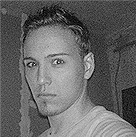 |
I have been a bachelor student at the University of Göttingen (Germany) for
3 year. Within the last year I have made contact with particle physics. In
my recently finished bachelor thesis I have worked on a ROOT based analysis
for the reconstruction of a light higgs boson in di-tau channel, produced in
vector boson fusion. At the moment I am looking forward to my work at CERN
within the stationed Göttingen’s group, where I will look into
likelihood-distributions for top-quarks. Due to my work done in the bachelor
thesis I am familiar with ROOT and #C."
|
|
|
|
|
Mohammed SALIM MALIYEKKAL |
Aligarh Muslim University - India |
|
 |
I am working as a PhD student in Aligarh Muslim University, India. Currently
I am working with India based Neutrino Observatory (INO) team for developing
a Geant4 based simulation package. My main task is code development for
track reconstruction using Kalman Filter technique. My programming skills
include C, C++ and ROOT. I am also using Geant4.
|
|
|
|
|
Jaroslava SCHOVANCOVÁ |
ASCR, Prague – Czech Republic |
|
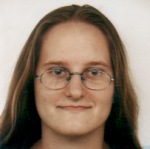 |
I
am a first-year PhD student at the Institute of Physics, ASCR, v. v. i.
working in the Top Quark Physics Working Group on the ATLAS experiment.
As a part of my PhD studies I am
involved in the ATLAS Distributed Computing Operations Shifts. I am also
engaged in the EGEE project, currently as a Regional Coordinator. I'm part
of the Grid production team of the Pierre Auger Observatory at the
Institute. I like python and C/C++ programming, shell scripting, Linux, Grid
Computing, and Django web framework.
|
|
|
|
|
Michal SIMON |
CERN, Geneva - Switzerland |

|
I am a doctoral student at Silesian University of Technology. I obtained MSc
Eng in Computer Science last year, I worked at my MSc thesis at DESY in
Hamburg. At the moment I am working as a CERN doctoral student in data
acquisition group in CMS experiment. My thesis main goals are studies of
scalability, analysis of performance (speed, memory consumption) and
stability particularly in the areas of communication between Run Control
System components, communication between the Run Control System and the
applications, communication with the database. I am also working on
development of a security component as well as design and implementation of
fault tolerance in the system such as dynamic recovery of crashed processes,
dynamic masking of faulty hardware or dynamic reconfiguration.
|
|
|
|
|
David SINUELA PASTOR
|
CERN, Geneva - Switzerland
|
|
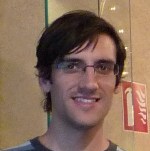
|
My current work consists in the development of raytracing functionality
inside the FLUKA simulator (http://www.fluka.org). Currently the only way to
visualize the geometry given to the simulation is by 2d plane cuts drawn by
gnuplot, the aim is to have a 3 dimensional representation of the geometry.
The implementation is currently working, made in C language but thinking in
a posterior conversion to FORTRAN 77. Given the limitations of FORTRAN 77,
the main algorithm has been converted to be iterative instead of recursive,
using a binary tree implemented in a fixed size array (there is not dynamic
memory allocation in F77). Now I'm converting the code to FORTRAN and it
will hopefully merged with the main FLUKA code by the end of this year. - I
feel more comfortable working with linux systems. Languages: C, C++, Java,
Ruby, Python, Fortran, Shell scripting, Javascript, etc. - I'll use my work
at CERN as my thesis, and this year I'll obtain the MSc degree.
|
|
|
|
|
Therese SJURSEN |
University of Bergen - Norway |
|
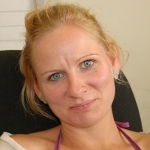 |
I am currently a PhD student in the experimental particle physics group at
the University of Bergen. So far my main focus has been on preparing
analysis tools for the search for Supersymmetry in the ATLAS detector at the
LHC. By analysing Monte Carlo simulated data the aim is develop methods to
suppress background from well known Standard Model physics scenarios to
enable discovery of new physics, such as Supersymmetry, occurring with a
much lower probability in the experiment.
|
|
|
|
|
Ugur Emrah SURAT |
METU, Ankara - Turkey |
|
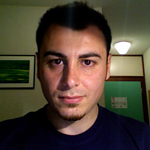 |
After getting my bachelor degree in Astrophysics, I started to work as a
MSc. student at METU in Turkey participating in the CMS Experiment at CERN.
Last year I have initiated in Exotica Group where I dealt with Large Extra
Dimension phenomenology particularly ADD model, looking for monojet channel.
My contribution focused on applying the compatible L1 and HLT trigger and
eliminating the detector effects for start-up conditions. I am also a member
of Detector Performance Group in CMS where i involved in HCAL subsystem in
parallel to my studies.
|
|
|
|
|
David SVANTESSON |
CERN, Geneva - Switzerland |
|
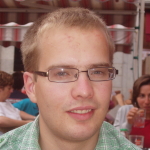 |
I am currently a technical student at the Online group of LHCb at CERN. My
main tasks are development and improvements of the control system and error
tracking for the data acquisition system. My work will be part of my M.Sc.
thesis in physics from Chalmers University (Sweden). In my work I mostly use
C, C++ and the SCADA system PVSS. I am also familiar with other computer
languages as Java, PHP, Javascript, MySQL, Matlab, LaTeX, bash scripts. I
use actively and configure different Linux/UNIX systems and occasionally
Windows.
|
|
|
|
|
Bayram TALI |
Cukurova Universiyt, Adana - Turkey |
|
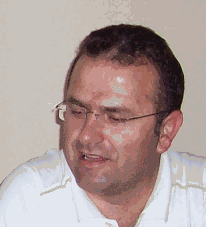
|
I am a PhD student at Cukurova University in
Adana. We have a big group involved in the hadronic calorimeter (HCAL) of
the CMS experiment. We contributed mainly to hadronic forward (HF) and
CASTOR calorimeters which are
the forward detectors of CMS. Our group is also working on several
physics topics like forward physics, heavy ions, SUSY search. I basically
contributed to the construction, commissioning and test beam analysis of the
CASTOR and also tested the PMTs to be used in CASTOR in our laboratory in
Adana. In my analysis I used CMSSW, ROOT and C++. My work on CASTOR is still
continuing. Before joining CMS I spent one year at Aristotle University of
Thessaloniki as a member of the ARTEMIS project which was involved in Higgs
analysis at ATLAS where I also used ATLAS software ATHENA.
|
|
|
|
|
Joni Jukka VÄLIMAA |
Helskinki Institute of Physics - Finland |

|
I am a graduate student and my studies are related to CMS GRID-computing and
CMS physics analysis with GRID and PROOF. Currently I am developing our
local GRID-system at University of Helsinki. Previously I was working for
nine years with telephone switches and got familiar with real time computing
and telecommunications. Most familiar I am with proprietary RTOs used in
Nokia like chorusOS and DMX. As an user level I am familiar most unix
variants and windows. Most familiar programming languages for me are C and
assembly (mostly i386, somewhat powerPC), which I used in my previous work.
More generally a can at least read C++, fortran and java, although I never
have done any serious work with them.
|
|
|
|
|
Adrian VOGEL |
Universität Bonn - Germany |
|
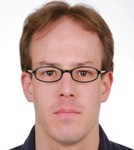 |
I am currently working on software development for a fast simulation of the
ATLAS tracking detectors, which means I'm programming in C++ within the
Athena environment. My task is to implement a connection to the conditions
data subsystem, allowing dead and noisy channels to be treated properly in
the detector simulation. Before that, I worked at DESY and did simulations
of beam-induced backgrounds in detectors at the International Linear
Collider, trying to estimate the impact of background particles which get
created in large amounts during each bunch crossing and which can then smash
into the forward instrumentation. For these studies I did Geant4-based
programming in C++ as well, but I also needed to deal with MySQL, PHP, XML,
and some shell scripting. Furthermore, I gained some experience with the
gLite middleware by running my jobs and storing my data on Grid resources.
|
|
|
|
|
Uwe WESTERHOFF |
Institut für Kernphysik, Münster – Germany |
|
 |
I am working as a PhD student at the "Institut für Kernphysik" in Münster
for the ALICE experiment. In my diploma thesis I have developed the online
control software for the Transition Radiation Detector of ALICE. Currently I
am involved in the development of online particle identification methods for
the Transition Radiation Detector to identify electrons with high transverse
momenta in pp and heavy ion collisions within a few micro seconds.
Furthermore I am the system administrator of our computer network and
involved in the maintenance of a 100 CPU cluster, which is part of the ALICE
computing grid.
|
|
|
|
|
Cenek ZACH |
FNSPE at CTU, Prague – Czech Republic |
|
 |
I was born in Varnsdorf in Czech Republic, where I attended basic school.
Then I attended grammar school in nearby city Rumburk. Now I have been
studying Experimental Nuclear Physics at FNSPE at CTU in Prague four years.
Currently I'm working on my diploma concerning simulating computing grid and
looking after our local computing cluster.
|
|
|
|
Last edited:
25-Mar-13
|
|

